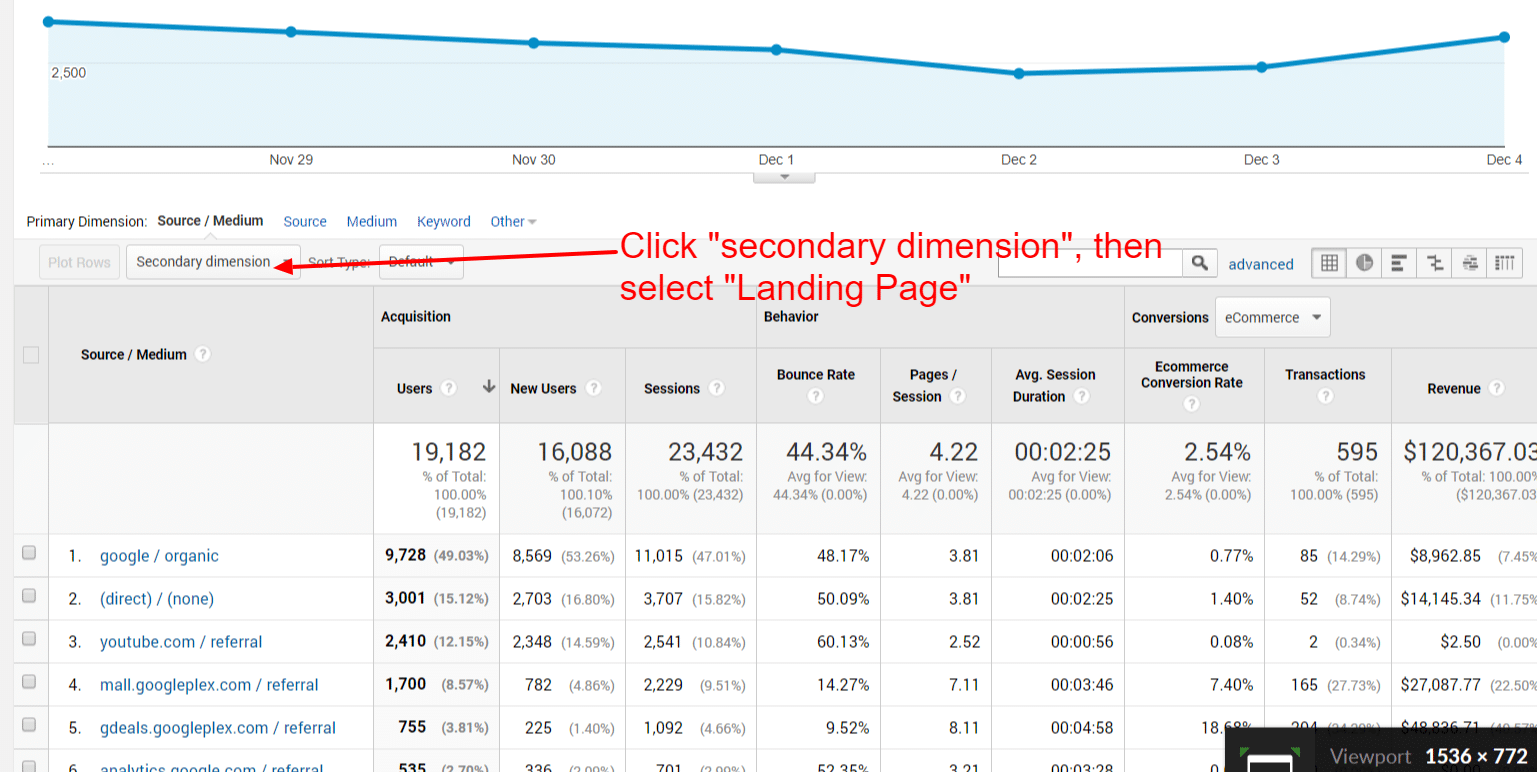Step-by-Step Overview: Leveraging Secondary Dimension in Google Analytics
Step-by-Step Overview: Leveraging Secondary Dimension in Google Analytics
Blog Article
Unlock Deeper Insights With Second Dimension in Google Analytics
With the large area of information available in Google Analytics, the utilization of additional measurements can dramatically enhance your logical capabilities. By strategically integrating secondary measurements right into your evaluation, you can discover important understandings that might or else remain obscure - Secondary Dimension in Google Analytics.
Comprehending Primary Vs. Secondary Dimensions
When evaluating information in Google Analytics, it is necessary to compare key and secondary measurements to gain much deeper understandings into customer actions. Main dimensions are the main classifications by which you can view your data, such as touchdown, source/medium, or tool page. These measurements give the basic structure for arranging and recognizing your information. On the other hand, secondary measurements allow you to further explore your primary measurement data. By adding an additional measurement, you can layer on added info to your primary measurement, making it possible for an extra granular analysis. For example, if your main measurement is the source/medium whereby users arrived on your site, adding an additional measurement like geographical area can reveal where those users lie geographically. This included layer of info can aid you recognize trends, patterns, or anomalies that might not have actually been obvious when looking at the key measurement alone. Leveraging both main and secondary measurements in Google Analytics is important for comprehensive data analysis and informed decision-making.
Utilizing Secondary Dimensions Effectively
Efficiently utilizing secondary measurements in Google Analytics improves the deepness and granularity of data analysis, giving useful insights into customer habits and patterns. By including second dimensions together with main measurements, online marketers and experts can dig much deeper into the specifics of user interactions on their internet sites. Secondary measurements allow customers to section and filter primary dimension data further, offering a much more comprehensive sight of individual habits, demographics, and communications. This can be especially valuable when trying to understand the effect of certain variables on individual engagement, such as the browsers or gadgets they are utilizing, the resources of their traffic, or their geographical places.
Moreover, secondary measurements enable individuals to compare and contrast different data factors within a single record, helping with a more extensive analysis of individual habits patterns. By leveraging additional measurements effectively, organizations can uncover covert insights, maximize their advertising and marketing strategies, and improve the overall individual experience on their websites.
Discovering Typical Secondary Dimension Mixes
To further assess individual habits and fads in Google Analytics, it is valuable to discover common combinations of secondary dimensions. Some typical secondary measurement combinations that supply beneficial insights consist of examining web traffic sources with individual locations to understand where web site visitors are coming from geographically and how they discovered the website. Analyzing individual habits metrics with additional measurements such as rate of interests or demographics can aid in targeting details target market segments more effectively.
Using Second Dimension in Customized Information
Using second measurements in custom records enables a more comprehensive analysis of data in Google Analytics, improving the depth of understandings obtained. When developing customized records in Google Analytics, including second dimensions can give an extra comprehensive view of how various dimensions connect with each various other. This feature makes it possible for individuals to dive deeper into their data and discover useful connections that may not be instantly obvious.
By applying additional dimensions in customized find more records, individuals can get a better understanding of their site or application website traffic. Incorporating the primary dimension of "source/medium" with the additional dimension of "touchdown web page" can disclose which landing web pages are performing ideal for traffic coming from particular sources. This insight can assist marketing experts optimize their projects and improve general conversion rates.

Enhancing Data Visualization With Additional Dimension
When checking out data in Google Analytics customized reports, integrating secondary dimensions not just offers a much more comprehensive analysis but additionally improves the graph of insights via data visualization. By adding an additional measurement to your records, you can improve the means data is offered, making it much easier to identify patterns, fads, and relationships within your site's performance metrics.
Additional measurements can help you sector your data further, permitting a much deeper understanding of user behavior and communications on your site. When attempting to separate certain variables that might influence your web site's performance., this boosted level of granularity can be specifically useful.

Conclusion
In verdict, leveraging secondary dimensions in Google Analytics permits a more extensive analysis of data, resulting address in deeper insights and more educated decision-making. Secondary Dimension in Google Analytics. By adding extra layers of info to primary information sets, online marketers and experts can reveal surprise trends, patterns, and connections that give a granular sight of individual actions and communications. This enhanced degree of insight makes it possible for optimization of campaigns and tailored methods for certain target market sectors, eventually improving efficiency and conversion rates
On the other hand, secondary measurements enable you Click Here to further dissect your primary dimension information. By adding a second measurement, you can layer on added info to your main dimension, allowing an extra granular evaluation. If your key measurement is the source/medium through which users got here on your site, including an additional measurement like geographic area can expose where those individuals are located geographically. By including secondary dimensions together with main dimensions, marketers and experts can delve deeper into the specifics of individual interactions on their web sites. Second dimensions allow users to sector and filter key dimension information further, using a much more detailed view of individual demographics, communications, and actions.
Report this page